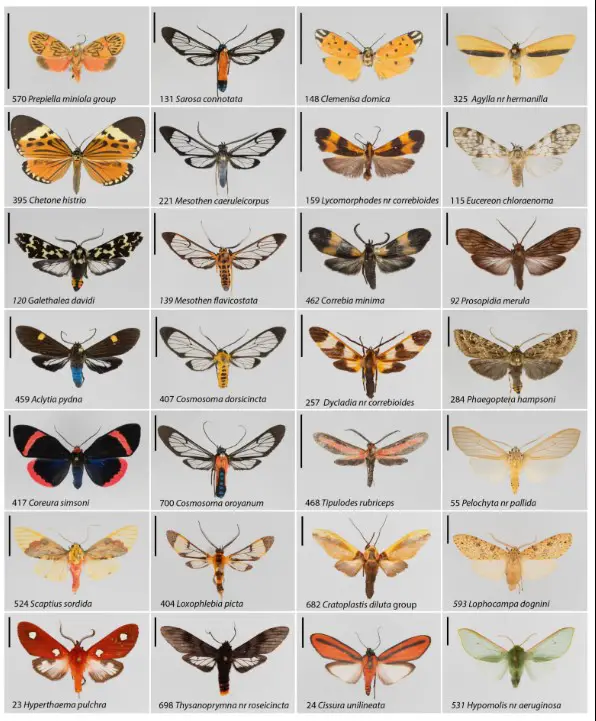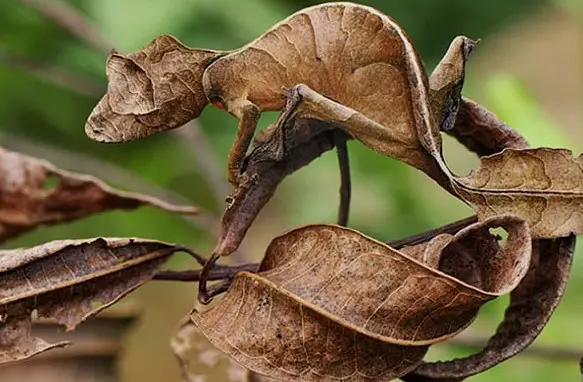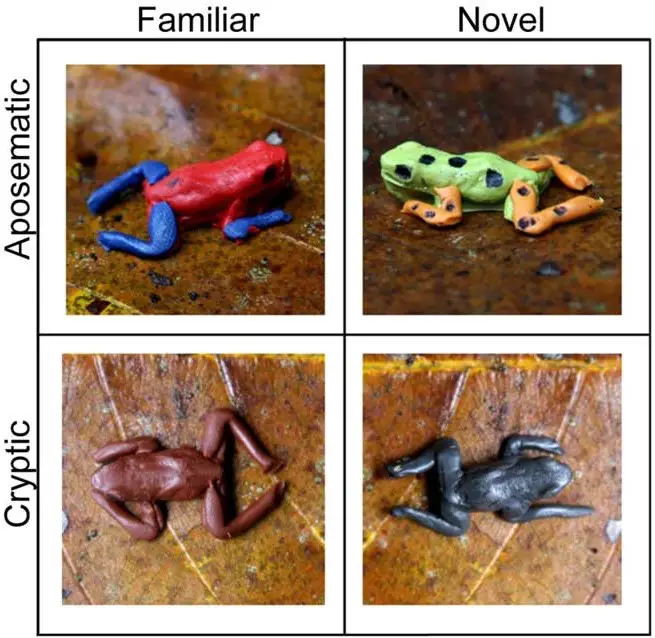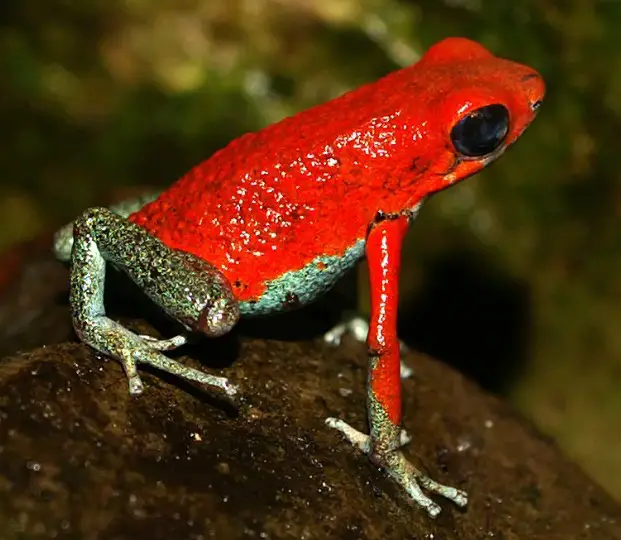The vivid splash of colors and patterns we observe in the animal kingdom serves more than just an aesthetic purpose; it’s a critical component of survival. From the striking stripes of a tiger to the subdued hues of a stick insect, coloration plays a pivotal role in the life and interactions of creatures across the globe. This diversity in appearance is not random but a result of millions of years of evolution, shaping the way species interact with their environment and each other.
Aposematic and cryptic coloration represent two fundamentally different survival strategies through visual signals. Aposematic coloration is nature’s warning sign, where bright colors and bold patterns alert predators to an animal’s toxicity or unpalatability. On the flip side, cryptic coloration allows animals to blend into their surroundings, making them nearly invisible to both predators and prey.
These coloration strategies showcase nature’s ingenuity in ensuring the survival of species. Aposematic coloration leverages the psychology of predators, conditioning them to associate bright colors with negative experiences. Cryptic coloration, however, takes a more passive approach, camouflaging individuals within their environment to avoid detection altogether. Both strategies highlight the complex interplay between visibility and survival in the natural world.

Coloration in Nature
Evolution of Coloration
The variety of colors and patterns we see in animals isn’t just for show. These traits have evolved over millions of years, playing a crucial role in survival and reproduction. The theory of natural selection, proposed by Charles Darwin, explains this phenomenon elegantly. Animals that had colorations which improved their chances of survival lived longer and reproduced more, passing on their genes to the next generation.
Role in Survival and Reproduction
In the wild, an animal’s color can mean the difference between life and death. Predator avoidance, mate attraction, and territory signaling are just a few survival strategies tied to coloration. For example, bright colors can attract mates, ensuring the continuation of a species, while camouflage allows others to hide from predators or sneak up on prey.
Natural Selection at Work
Natural selection favors those who are best adapted to their environment. Over time, species develop coloration strategies that help them avoid predators, find food, or choose healthy mates. These adaptations are evidence of natural selection shaping the very essence of life on Earth.
Types of Coloration
The animal kingdom employs a vast array of coloration strategies, each serving a unique purpose in the struggle for survival. These strategies can be broadly categorized into aposematic coloration and cryptic coloration, along with others like mimicry and countershading.
Overview of Different Coloration Strategies
- Aposematic coloration: Bright and noticeable, warning predators of toxicity or unpleasant taste.
- Cryptic coloration: Blends into the environment, making the animal hard to detect.
- Other strategies like mimicry, where an animal mimics the appearance of another, more dangerous species, and countershading, where an animal’s coloration is darker on the top and lighter on the bottom, reducing shadows and making them harder to detect, also play crucial roles in survival.
Aposematic Coloration
Definition and Examples
Aposematic coloration is nature’s warning system. Animals sporting bright colors and bold patterns are often signaling their toxicity or defensive capabilities to potential predators. The monarch butterfly, with its distinctive orange and black wings, is a classic example. Predators who have experienced the butterfly’s unpleasant taste learn to avoid these colors in the future.
Purpose and Benefits
The primary purpose of aposematic coloration is to warn predators, thereby reducing the likelihood of an attack. This evolutionary advantage allows such species to spend less energy on fleeing from predators and more on growth, reproduction, and foraging.
Common Traits
Animals with aposematic coloration often share traits like bright colors, bold patterns, and sometimes even auditory or olfactory signals to enhance their warning. Examples include the poison dart frog, coral snake, and the aforementioned monarch butterfly.
Cryptic Coloration
Definition and Examples
In contrast to the loud and proud aposematic coloration, cryptic coloration is all about blending in. Animals with this type of coloration mimic the colors, patterns, and sometimes even the textures of their environment. The leaf-tailed gecko, for example, is almost indistinguishable from the tree bark it resides on.
Purpose and Benefits
The main advantage of cryptic coloration is camouflage. By blending into their surroundings, animals can avoid detection by predators or ambush prey. This strategy offers a significant evolutionary advantage in terms of survival and hunting efficiency.
Common Traits
Common traits of cryptic coloration include color matching, pattern blending, and behavioral adaptations like remaining motionless when predators are nearby. Species that excel in this strategy include the stick insect, the snowshoe hare, and the flounder.

Aposematic vs. Cryptic Coloration
Visual Distinctions
Comparing Colors and Patterns
Aposematic coloration stands out because of its vivid colors and striking patterns. These features serve as a warning to predators about potential danger or unpalatability. On the other hand, cryptic coloration involves colors and patterns that blend into the animal’s surroundings, making them nearly invisible to both predators and prey.
Impact on Predator-Prey Dynamics
The presence of aposematic species can alter the hunting behavior of predators, leading them to avoid certain colors or patterns associated with a bad experience. Conversely, cryptic coloration challenges predators to improve their detection abilities, thus influencing the evolutionary arms race between predator and prey.
Ecological Impacts
How Each Affects Survival Strategies
Aposematic coloration can create “safe zones” for similarly colored species, even if they aren’t poisonous themselves (a phenomenon known as Batesian mimicry). Cryptic coloration, however, encourages solitary or nocturnal lifestyles, as these animals rely on blending in rather than standing out.
Role in Ecosystem Balance
Both aposematic and cryptic colorations contribute to biodiversity and ecosystem health by ensuring a balanced predator-prey dynamic. This balance is crucial for the stability and sustainability of ecosystems, affecting everything from plant pollination to the control of pest populations.
Adaptive Strategies
Evolutionary Pathways
The development of aposematic and cryptic colorations represents two distinct evolutionary pathways. While both strategies are responses to predation pressure, they embody different survival tactics: visibility versus invisibility.
Predation Pressure and Mimicry
Predation pressure not only shapes the evolution of coloration strategies but also encourages the development of mimicry. Mimicry, where a non-dangerous species imitates the warning signals of a dangerous one, bridges the gap between aposematic and cryptic strategies, showcasing the complex interactions within natural ecosystems.
Case Studies
Aposematic Species Study: The Poison Dart Frog
One of the most iconic examples of aposematic coloration is the poison dart frog, found in the tropical rainforests of Central and South America. These frogs display bright colors, ranging from yellow and orange to blue and green, signaling their toxicity to potential predators.
Survival Strategies and Benefits
- Toxicity: Poison dart frogs develop their poison from their diet of ants, centipedes, and mites. This chemical defense deters most predators.
- Warning colors: Their vivid colors efficiently warn predators of their toxicity, providing a significant survival advantage.
Cryptic Species Study: The Common Cuttlefish
The common cuttlefish is a master of cryptic coloration. Capable of changing its skin color and texture in seconds, it blends seamlessly with its surroundings to hide from predators and ambush prey.
Survival Strategies and Benefits
- Camouflage: By mimicking the colors, patterns, and even textures of its environment, the cuttlefish can hide in plain sight.
- Behavioral adaptations: Cuttlefish use their camouflage to approach prey undetected or escape from predators.
Implications for Conservation
Protecting Species with Unique Colorations
Conservation efforts must prioritize the protection of habitats that support species with unique colorations. Preserving these environments ensures the survival of species that rely on aposematic signals or cryptic camouflage for their survival.
Role in Biodiversity and Ecosystem Health
Species with unique coloration strategies are vital for the health of ecosystems. They contribute to biodiversity, which is essential for ecosystem resilience, providing benefits from disease regulation to climate stabilization. Conservation strategies that support these species, therefore, support the broader health and stability of our planet.

Frequently Asked Questions
What is Aposematic Coloration?
Aposematic coloration refers to the use of bright colors and patterns by animals to warn potential predators of their toxicity or unpleasant taste. This survival strategy relies on visibility to deter predators, effectively communicating the message: “I’m dangerous or unpalatable.”
How Does Cryptic Coloration Work?
Cryptic coloration enables animals to blend into their surroundings, making them harder to detect by predators and prey. This method involves matching the color, patterns, and sometimes even the texture of the environment, allowing the animal to hide in plain sight.
Why Do Some Animals Use Bright Colors to Avoid Predators?
Bright colors in animals often serve as a warning sign to predators, indicating that the animal may be poisonous, venomous, or otherwise harmful if consumed. This strategy, known as aposematic coloration, is used by many species to avoid predation by making themselves highly visible and recognizable as dangerous or unpalatable.
Can Coloration Change in Animals?
Yes, some animals can change their coloration based on environmental factors, seasonal changes, or during specific life stages. This adaptability helps in camouflage, temperature regulation, and signaling to other individuals. However, the ability to change color is species-specific and not universal among all animals.
Conclusion
The fascinating world of aposematic and cryptic coloration reveals the depth and complexity of evolutionary strategies in nature. These coloration methods are not just about beauty or blending in; they are critical survival tactics that have developed over millennia. Through the lens of these strategies, we gain insight into the intricate balance of ecosystems, predator-prey dynamics, and the ongoing dance of adaptation and survival.
Understanding these coloration strategies enhances our appreciation of biodiversity and the subtle yet profound ways in which life on Earth is interconnected. It reminds us of the importance of conservation efforts, as preserving habitats means maintaining the delicate balance that allows such diverse survival strategies to exist. As we continue to explore and learn from nature, the lessons from aposematic and cryptic coloration will undoubtedly play a crucial role in guiding our efforts to protect and sustain the natural world.

